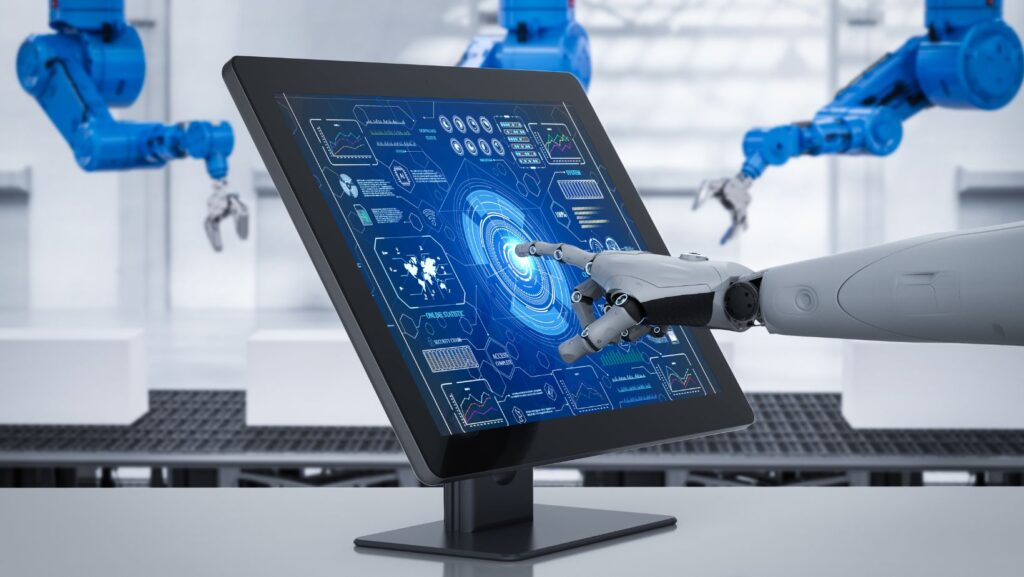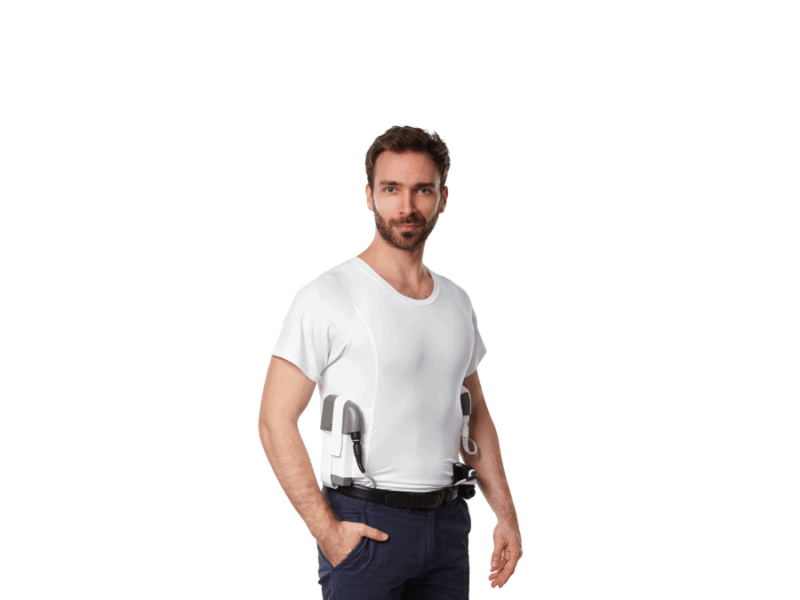
Increasing innovations in technology are frequently improving our lives. Healthcare is no exception.
This year, 2025, we’ve seen profound transformations in technology and science that improve the way we care for patients. From artificial intelligence revolutionizing the way we do things to digital therapeutics improving chronic disease management, we are constantly seeing incredible innovations to improve patient outcomes.
What are some of the top tech and science trends shaping healthcare in 2025?
Read on to find out how seven tech trends are changing the way healthcare is managed and what it means for patients.
1. Greater adoption of AI: revolutionizing healthcare
Have you noticed that AI is no longer just a buzzword? That’s right: artificial intelligence is already a part of clinical decision-making and operational workflows in most healthcare facilities.
The following are just a few examples:
- Administrative automation: Many AI models automate tasks such as scheduling, document management, patient admittance to the hospital, and more. This allows healthcare clinicians to focus more on patient care than on the administrative side of the job.
- Diagnostics and imaging: Some AI tools can correctly interpret MRI scans, X-rays, and pathology slides. This can help healthcare facilities reduce the waiting time for emergent results.
- Predictive analytics for patient outcomes: Wearable technology devices in patient monitoring can also predict disease progression and suggest timely interventions.

More AI-dependent technology is used and will be used to give patients more access to comprehensive information about their own healthcare. However, AI does not replace clinicians; instead, it empowers them to make better decisions, provided training and transparency are in place.
2. Telehealth and patient monitoring
Telemedicine continues to expand. It supports underserved and rural areas in accessing the health services they lack. Telehealth also uses wearables and remote monitoring, allowing healthcare providers to track patient progress.
Generally, a mix of virtual and in-person services is used. Some benefits of telehealth for patients include:
- Better and faster access to healthcare: Healthcare access is a difficult challenge to solve. Telehealth can improve access for underserved rural populations.
- Less risk of infection: Telehealth allows patients to protect themselves by limiting or avoiding contact entirely with hospitals where contagious diseases may be present.
- Time savings: It is often quicker and easier to schedule a call with a clinician than to go to a healthcare provider.
- A broader access to mental health care: Thanks to telehealth, many patients have begun to access services to support their mental health.
3. Smart solutions to address staffing gaps
Labor costs are increasing, and persistent staffing shortages are affecting facilities across the country and worldwide. This is why healthcare facilities are exploring alternative healthcare staffing solutions. Flexible staffing platforms are the most widely used example of an innovative solution to the staffing crisis.
Nursa is a prime example of this solution. Through its digital platform, it connects facilities that have scheduling gaps with on-demand clinicians who pick up shifts, allowing facilities to maintain quality patient care.
Some advantages of integrating a flexible staffing platform like Nursa into your staffing strategy include the following:
- Automated scheduling: Scheduling conflicts are minimized by being able to streamline shift assignments.
- Real-time demand matching: These services can use data analytics and AI to align clinicians’ availability with facilities’ needs.
- Cost efficiency: By having the right number of personnel when needed, facilities can avoid overtime costs and rigid, expensive agency contracts.
- Better responsiveness: PRN staffing platforms like Nursa can help facilities cover shifts on short notice, even at the last minute.
4. Robotic assistance in rehabilitation
The integration of robotics has tremendous potential for patient recovery with rehabilitation and physical therapy. With robots, a therapist can see the patient’s progress, and patients have more access to therapies.
Rehabilitation robots assist patients in regaining strength and mobility. Thus, they guide exercises and provide support to patients who have had surgeries or accidents.
Physical therapy robots are used for elderly patients and for neurological conditions. Generally, they provide motivating and consistent therapy sessions.
5. Emergence of digital therapeutics
As of 2025, digital therapeutics (DTx) have become a mainstream healthcare innovation tool. Digital therapeutics are software-driven interventions designed to prevent and treat diseases. They are similar to wellness apps but have been regulated and validated by the FDA, EMA, or European health bodies.
There are mental health apps, programs to help recover from substance use disorders, treatments for insomnia, vision therapy, chronic disease management, therapy for neurological conditions, and more. Products such as Akili Interactive or Omada Health are now prescribed by physicians.
6. Greater need for ethical and regulatory challenges
With any new technology tool, data security is important. Some ethical concerns in health tech advances, related to patient equity and privacy, include the following:
- Inequality and access: Unfortunately, there are many examples where technology cannot reach all patients. Generally, it is a question of whether or not a patient can afford to pay for technology that could support their recovery.
- Patient privacy: In some cases, such as in personalized medicine and genomics, safeguarding patient information has become more complex. With more and more patient data being shared across devices, safeguarding private information is imperative.
- Transparency in technology: AI outcomes do not always explain how they arrived at a result. It is important for clinicians to understand how the tech makes decisions and conclusions.
- Inaccurate predictions: Bias and fairness in AI tools can lead to inaccurate predictions, poor treatment recommendations, and misdiagnosis.
7. Automation and robotics in surgery
Automation and robotics are improving surgical practice:
-
- Robot surgeons: There are systems that allow minimally invasive procedures, such as the Da Vinci Surgical System. This system, for example, allows surgeons to navigate robotic arms to perform precise and small movements inside the patient’s body, in addition to filtering out hand tremors.
- Robotic aids: Robotic aids improve surgical recovery times by being less invasive and correcting small errors that surgeons can make. Exoskeletons and other robotic devices support patients and help them rehabilitate faster after surgery.
What do advances in science hold for healthcare?
As you can see, new medical technologies are changing the future of healthcare.
Despite ethical and technological challenges, more and more measures are being adopted in various areas. These innovations reduce costs and improve patient experience at the same time. Stay connected to learn about innovative technologies that can change your life.












